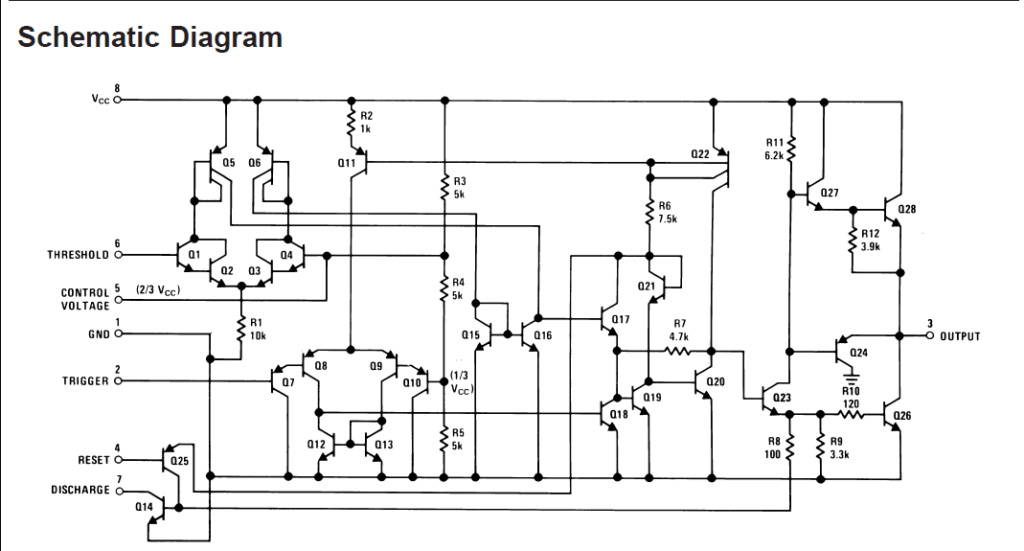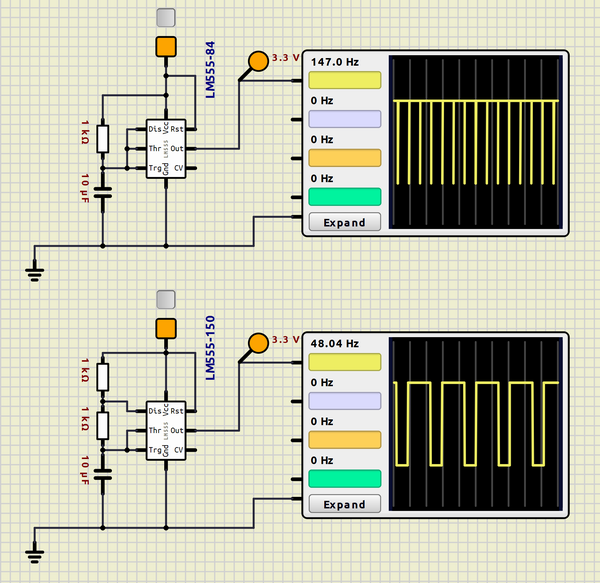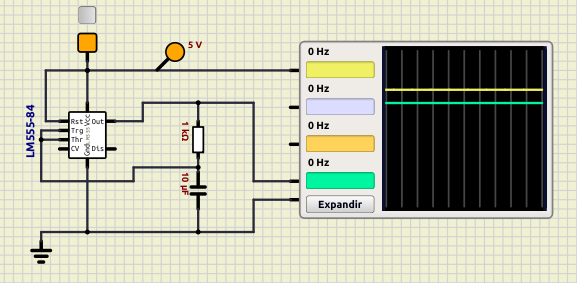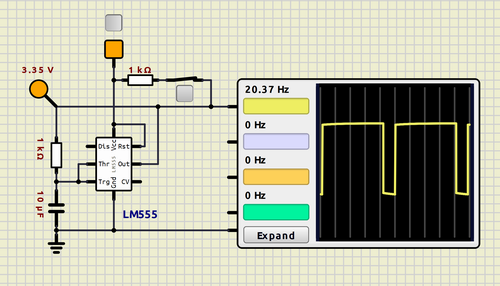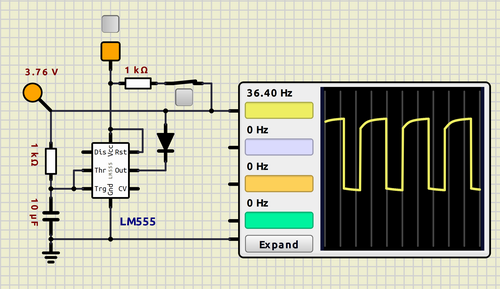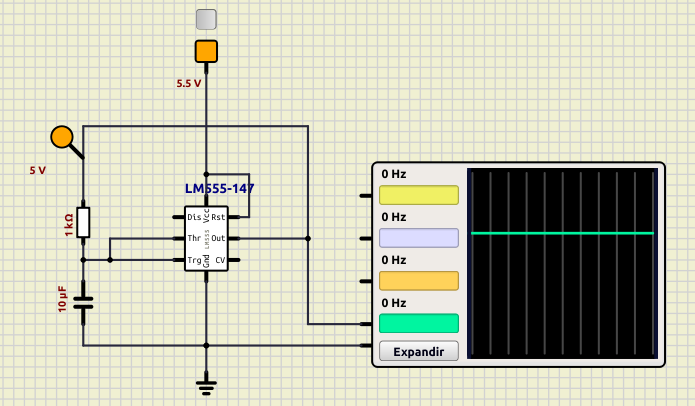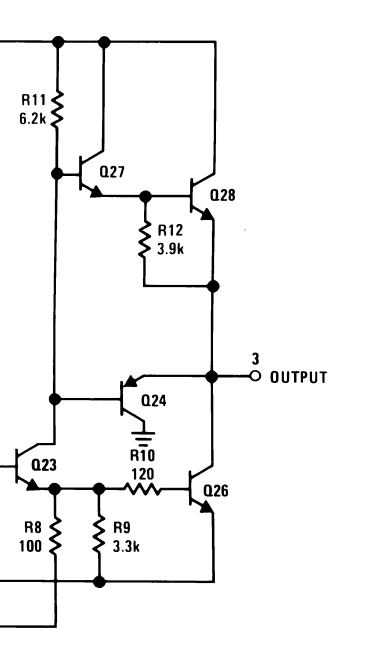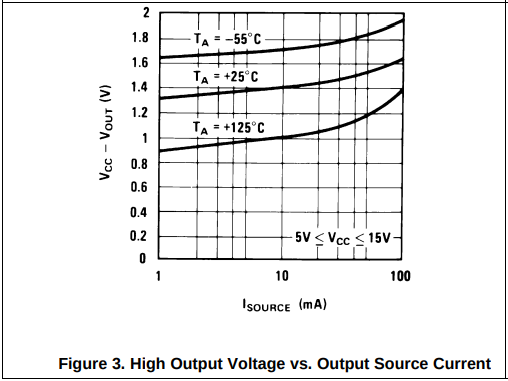Hi,
I'm doing a 555 course and according to the teacher, the circuit I'm sending you should give this result, but in fact it doesn't on SimulIDE. What am I doing wrong?
I'm doing a 555 course and according to the teacher, the circuit I'm sending you should give this result, but in fact it doesn't on SimulIDE. What am I doing wrong?
- Attachments
 t10_el_mas_simple.sim1.zip
t10_el_mas_simple.sim1.zip - SImulIDE circuit
- You don't have permission to download attachments.
- (2 Kb) Downloaded 8 times

 Latest images
Latest images

